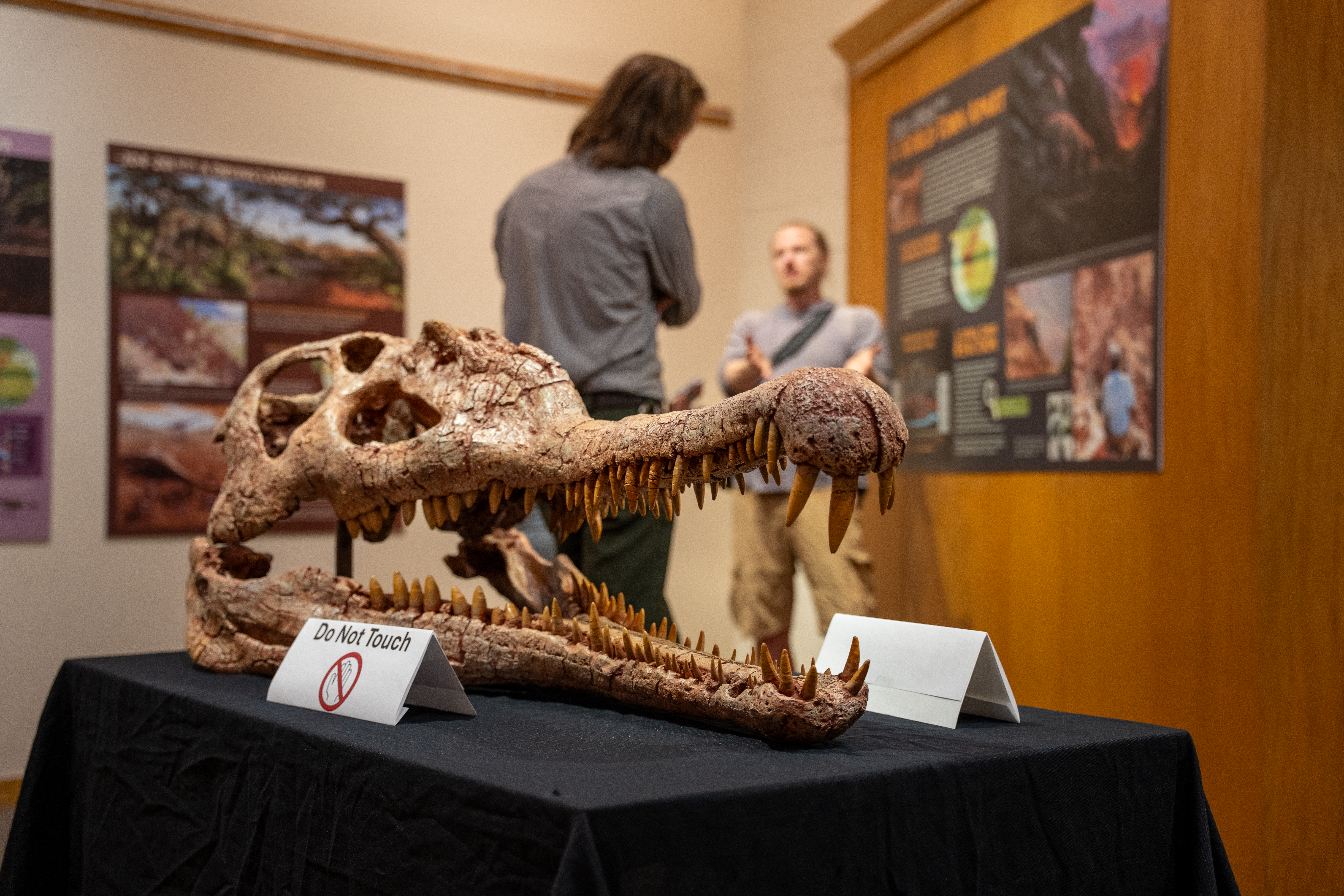News Release

NPS / Abi Farish
|
Subscribe
|
Contact: zion_newsdesk@nps.gov, 435-772-0162
SPRINGDALE, Utah – The Zion Human History Museum has a new exhibit, one as old as the dinosaurs! Come take a trip through the late Triassic period, the End Triassic Extinction, and the beginnings of the Jurassic period, taking place 227 - 180 million years ago, all while following the scientists behind the research.
Using evidence found in the rocks in Zion, the exhibit explores the rapid climate change that caused the End Triassic Extinction and how it affected animals and landscapes around the world. This information was gathered by a team led by Dr. Celina Suarez, geoscience professor at the University of Arkansas, as part of a seven-year research project.
By identifying a spike in CO2 levels in the park’s Moenave Formation, Dr. Suarez and her team pinpointed an influx of volcanic eruptions over 200 million years ago that caused the splitting of the ancient supercontinent Pangea. These findings can be found in similar sites across the world. Dr. Suarez and her team also found evidence that this exact same spike in CO2 levels caused the wildfires and intense weather patterns that ultimately led to the End Triassic Extinction, a global event that wiped out approximately 80 percent of all marine and terrestrial species on Earth.
“We’ve got to look at the geologic past and all these past events to understand where we're going in the future," said Suarez. “If we can just get one or two people that come and visit Zion to understand that...I've done my job.”
The creation of this exhibit is thanks to a collaboration of scientists, artists and partners, including Zion Forever Project, St. George Dinosaur Discovery Museum, the Utah Geological Survey, and the National Science Foundation.
“None of us could have done anything to this scale by ourselves,” said Robyn Henderek, the park’s physical scientist. “We all had a role to play in this process."
See the exhibit yourself at the Zion Human History, open 9 a.m. - 6 p.m. in the summer. Hours can be found here.
www.nps.gov/zion
About the National Park Service. More than 20,000 National Park Service employees care for America's national parks and work with communities across the nation to help preserve local history and create close-to-home recreational opportunities. Learn more at www.nps.gov, and on Facebook, Instagram, Twitter, and YouTube
Last updated: June 5, 2025
